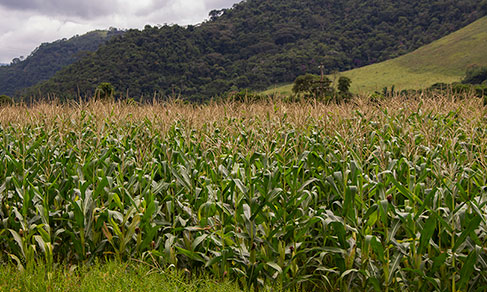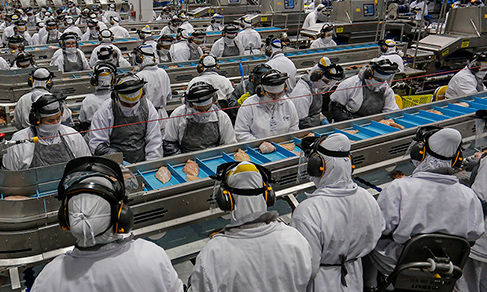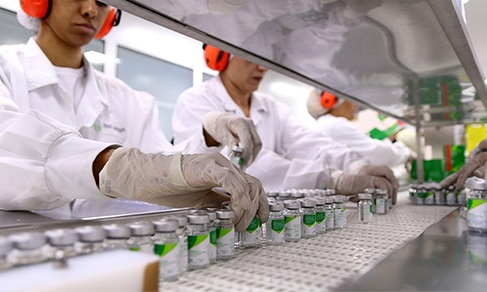Experimental Statistics
Birth rate of employer enterprises reaches 15.3% and is the highest since 2017
December 05, 2024 10h00 AM | Last Updated: December 05, 2024 03h13 PM
Highlights
- Em 2022, foram registrados 405,6 mil nascimentos de empresas empregadoras;
- A taxa de nascimento, proporção em relação ao total de empresas empregadoras, alcançou 15,3%, maior percentual desde 2017 (10,9%), após cair a 10,7% em 2020.
- Os nascimentos de empresas empregadoras ocuparam aproximadamente 1,7 milhão de pessoas assalariadas, cuja taxa de participação passou de 4,0% em 2021 para 4,6% em 2022, a maior desde 2017.
- O setor de Comércio representou 39,4% das novas empresas em 2022;
- Em 2022, foram identificadas 210,7 mil mortes de empresas empregadoras no ano de 2020. Com isso, a taxa de mortes ficou em 9,0%, menor percentual desde 2015 (12,2%).
- Empresas que morreram em 2020 eram responsáveis por 2,4% do total de assalariados;
- Das empresas nascidas em 2021, 79,6% sdobreviveram ao primeiro ano de atividade;
- Empresas de alto crescimento empregaram 8,0 milhões de pessoas.

In 2022, 405.6 thousand births were registered by employer enterprises, the highest value since 2017. As a result, the birth rate, a proportion in relation to the total number of employer enterprises, reached 15.3%, the highest percentage since 2017 (10.9%) and the second consecutive year of growth, after falling from 12.8% to 10.7% between 2019 and 2020. In 2021, the birth rate was 13.8%.
The employer enterprises which were born hired approximately 1.7 million employees, with the participation rate rising from 4.0% in 2021 to 4.6% in 2022, also the highest proportion since 2017 (3.3%), after having fallen to 3.0% in 2020. This information is from the study “Demography of Enterprises and Statistics of Entrepreneurship”, released today (5) by the IBGE.
In 2022, Brazil had 7.9 million active enterprises, of which 2.6 million were employers. They employed 40.5 million persons, 36.5 million of whom were employees. Salaries and other compensations paid totaled R$1.4 trillion, with an average monthly salary of 2.6 minimum wages, equivalent to R$3,108.66.
Trade accounted for almost 4 out of every 10 new enterprises in 2022
The activity that contributed most to the creation of employer enterprises was Trade; repair of motor vehicles and motorcycles, which accounted for 39.4% of job creation, and was also responsible for the largest share of active employer enterprises, 42.7%. The Lodging and food sector appears in second place in the set of job creation (9.9%), but in third place in active enterprises, 8.0%. Finally, Manufacturing industries were responsible for the third largest number of job creation, 8.7%, and the second largest number of active enterprises, 11.2%.
Also worth mentioning are the Construction; Arts, culture, sports and recreation; and Other service activities, with the highest birth rates, 22.2%, 21.2% and 19.5%, respectively. The lowest birth rates were observed in Other sections (7.3%) and Electricity and gas (8.4%).
Considering the employer enterprises that were born in 2022, the 5 sections that stand out for presenting the highest percentages of salaried employees are: Trade; repair of motor vehicles and motorcycles (27.8%); Administrative activities and complementary services (13.8%); Lodging and food (10.8%); Manufacturing industries (10.6%); and Construction (10.2%).
“The profile of the enterprises that were born in 2022 is very similar to the stock of existing enterprises, taking into account the main economic activities”, highlighted Thiego Ferreira, manager of Analysis and Dissemination of the survey.
| Table 5 - Employing companies and salaried employees, with their respective percentage distributions and rates, by section of CNAE 2.0, according to the birth event of employing companies - Brazil - 2022 | ||||||||||
|---|---|---|---|---|---|---|---|---|---|---|
| Sections of CNAE 2.0 |
Active employer enterprises | Birth of employer enternprises | ||||||||
| Total | Percentage distribution (%) |
Salaried emplyed persons | Total | Percentage distribution (%) |
Rates (%) |
Salaried emplyed persons | ||||
| Total | Percentage distribution (%) |
Total | Percentage distribution (%) |
Rates (%) |
||||||
| Total | 2 647 896 | 100,0 | 36 539 197 | 100,0 | 405 563 | 100,0 | 15,3 | 1 663 688 | 100,0 | 4,6 |
| A Agriculture, livestock, forestry, fishing and aquaculture | 25089 | 0,9 | 506 878 | 1,4 | 4 667 | 1,2 | 18,6 | 27 725 | 1,7 | 5,5 |
| B Mining and quarrying industries | 6082 | 0,2 | 227 157 | 0,6 | 652 | 0,2 | 10,7 | 4 437 | 0,3 | 2,0 |
| C Manufacturing industries | 297088 | 11,2 | 7 952 279 | 21,8 | 35 434 | 8,7 | 11,9 | 175 581 | 10,6 | 2,2 |
| D Electricity and gas | 1433 | 0,1 | 131 200 | 0,4 | 121 | 0,0 | 8,4 | 806 | 0,0 | 0,6 |
| E Water, sewage, waste management and decontamination activities | 8796 | 0,3 | 391 539 | 1,1 | 1 370 | 0,3 | 15,6 | 15 677 | 0,9 | 4,0 |
| F Construction | 131205 | 5,0 | 2 213 731 | 6,1 | 29 079 | 7,2 | 22,2 | 169 195 | 10,2 | 7,6 |
| G Trade; repair of motor vehicles and motorcycles | 1130055 | 42,7 | 9 531 253 | 26,1 | 159 967 | 39,4 | 14,2 | 462 809 | 27,8 | 4,9 |
| H Transportation, storage and mailing | 123651 | 4,7 | 2 501 287 | 6,8 | 18 322 | 4,5 | 14,8 | 88 738 | 5,3 | 3,5 |
| I Lodging and food | 212187 | 8,0 | 1 909 602 | 5,2 | 40 249 | 9,9 | 19,0 | 179 046 | 10,8 | 9,4 |
| J Information and communication | 48676 | 1,8 | 1 147 708 | 3,1 | 6 719 | 1,7 | 13,8 | 35 235 | 2,1 | 3,1 |
| K Financial, insurance and related services activities | 29148 | 1,1 | 1 117 979 | 3,1 | 4 052 | 1,0 | 13,9 | 17 164 | 1,0 | 1,5 |
| L Real estate activities | 34679 | 1,3 | 187 072 | 0,5 | 5 130 | 1,3 | 14,8 | 12 682 | 0,8 | 6,8 |
| M Professional, scientific and technical activities | 144536 | 5,5 | 1 264 316 | 3,5 | 24 201 | 6,0 | 16,7 | 97 029 | 5,8 | 7,7 |
| N Administrative activities and complementary services | 159973 | 6,0 | 4 600 728 | 12,6 | 27 696 | 6,8 | 17,3 | 229 847 | 13,8 | 5,0 |
| P Education | 70277 | 2,7 | 1 103 246 | 3,0 | 9 181 | 2,3 | 13,1 | 48 714 | 2,9 | 4,4 |
| Q Human health and social services | 144822 | 5,5 | 1 235 221 | 3,4 | 22 656 | 5,6 | 15,6 | 52 992 | 3,2 | 4,3 |
| R Arts, culture, sports and recreation | 25834 | 1,0 | 172 593 | 0,5 | 5 473 | 1,3 | 21,2 | 19 350 | 1,2 | 11,2 |
| S Other service activities | 54256 | 2,0 | 308 944 | 0,8 | 10 586 | 2,6 | 19,5 | 26 490 | 1,6 | 8,6 |
| Other sections (1) | 109 | 0,0 | 36 464 | 0,1 | 8 | 0,0 | 7,3 | 171 | 0,0 | 0,5 |
| Source: IBGE, Diretoria de Pesquisas, Coordenação de Cadastro e Classificações, Cadastro Central de Empresas 2022. (1) These include the sections Public administration, defense and social security and International organizations and other extraterritorial institutions. The difference observed in the results of these sections in relation to the others can be explained by the small number of organizations included in this category. Due to this characteristic, small fluctuations can generate large impacts on the total result of these activities. (2) The rates are presented with one decimal place, as are the differences between them. However, to calculate these differences, more decimal places are considered, which can generate discrepancies in rounding values of the differences between the rates. |
||||||||||
92.7% of enterprises have fewer than 10 employees
In 2022, 92.7% of the employer enterprises that were born had 1 to 9 employees, with a predominance of smaller enterprises, while 6.6% had 10 to 49 employees and 0.7% had 50 or more employees. Regarding the birth rate, smaller enterprises showed greater dynamism compared to the others, with a birth rate of 17.6%, while the others had 6.2% and 3.5%, respectively.
Enterprises that died in 2020 were responsible for 2.4% of the total number of employees
The death of an employer enterprise is an event characterized by the closure of employer enterprises or interruption of at least 24 months after the reference year; as well as by the loss of employees, even if these enterprises are registered as active for at least 24 months after the reference year. In order to analyze this event, it is necessary to observe it at least two years after the reference year. Therefore, the deaths evidenced with data from 2022 refer to the year 2020.
In the 2022 study, 210.7 thousand deaths were identified in employer enterprises in 2020. As a result, the death rate was 9.0%, the lowest percentage since 2015 (12.2%). These enterprises had approximately 774.0 thousand employees, which corresponded to 2.4% of the total employees in the reference year.
| Table 7 - Employer enterprises and salaried employed persons with their respective rates, according to the death of employer enterprises - Brazil - 2015-2020 | ||||||
|---|---|---|---|---|---|---|
| Year | Employer enterprises | Saaried employed persons | ||||
| Total | Deaths | Total | Deaths | |||
| Total | Rates (%) |
Total | Rates (%) |
|||
| 2015 | 2 475 852 | 300 892 | 12,2 | 33 623 393 | 1 114 598 | 3,3 |
| 2016 | 2 424 862 | 290 372 | 12,0 | 32 011 930 | 980 733 | 3,1 |
| 2017 | 2 400 278 | 297 542 | 12,4 | 31 877 046 | 1 043 033 | 3,3 |
| 2018 | 2 373 109 | 301 410 | 12,7 | 32 296 827 | 1 003 178 | 3,1 |
| 2019 | 2 374 628 | 264 517 | 11,1 | 33 071 591 | 904 373 | 2,7 |
| 2020 | 2 348 306 | 210 714 | 9,0 | 32 411 917 | 774 043 | 2,4 |
| Source: IBGE, Diretoria de Pesquisas, Coordenação de Cadastro e Classificações, Cadastro Central de Empresas 2015-2022. | ||||||
The smaller employer enterprises (1 to 9 employees) were responsible for 62.5% of the total employed personnel of the enterprises that died, 50.7% of the employees and paid 46.6% of the wage bill. Meanwhile, enterprises with 10 to 49 employees employed 17.4% of the total staff, 22.1% of the salaried staff, and paid 21.6% of the salaries. Enterprises with 50 or more employees employed 20.1% and 27.2%, respectively, and paid 31.7% of the salaries.
Of the enterprises born in 2021, 79.6% survived their first year of activity
Of the employer enterprises that were born in 2017, 76.2% survived in 2018, 59.6% in 2019, 49.4% in 2020, 42.3% in 2021, and only 37.3% survived in 2022. The percentage of survivors in the first year of survival has shown an increasing movement since 2018, when there was a drop of 1.8 pp compared to 2017. Thus, 74.4% of the enterprises born in 2018 survived in 2019, while 79.6% of the enterprises born in 2021 survived in 2022. From the second year of survival, the percentage has been increasing since the initial year of observation.
Considering the enterprises that were born in 2017, the Electricity and Gas section had the highest survival rate (89.1%) after one year and 58.0% after 5 years, while the Construction section had the lowest, 66.1% and 26.2% for the same period, which represents a difference of 31.8 pp.
| Table 13 - Employer enterprises and survival rate of enterprises born in 2017, by years of observation, according to the sections of CNAE 2.0 - 2018-2022 | ||||||
|---|---|---|---|---|---|---|
| Sections of CNAE 2.0 | Enterprises born in 2017 | Taxa de sobrevivência, por anos de observação | ||||
| 1st year 2018 (%) |
2nd year 2019 (%) |
3rd year 2020 (%) |
4th year 2021 (%) |
5th year 2022 (%) |
||
| Total | 261 302 | 76,2 | 59,6 | 49,4 | 42,3 | 37,3 |
| A Agriculture, livestock, forestry, fishing and aquaculture | 2 177 | 76,8 | 62,2 | 53,2 | 46,6 | 41,9 |
| B Mining and quarrying industries | 391 | 74,9 | 58,6 | 50,1 | 45,3 | 40,2 |
| C Manufacturing industries | 20 925 | 78,3 | 62,7 | 53,2 | 46,8 | 42,3 |
| D Electricity and gas | 119 | 89,1 | 73,9 | 65,5 | 62,2 | 58,0 |
| E Water, sewage, waste management and decontamination activities | 739 | 76,0 | 61,6 | 53,3 | 47,2 | 42,2 |
| F Construction | 17 709 | 66,1 | 47,5 | 37,8 | 31,5 | 26,2 |
| G Trade; repair of motor vehicles and motorcycles | 111 520 | 76,6 | 59,2 | 49,1 | 42,0 | 37,0 |
| H Transportation, storage and mailing | 13 748 | 74,4 | 57,5 | 47,1 | 39,4 | 34,3 |
| I Lodging and food | 26 776 | 74,4 | 56,3 | 43,7 | 35,4 | 30,6 |
| J Information and communication | 4 793 | 78,9 | 65,2 | 56,1 | 49,2 | 43,8 |
| K Financial, insurance and related services activities | 2 800 | 77,4 | 62,8 | 54,5 | 47,3 | 42,3 |
| L Real estate activities | 3 270 | 77,4 | 63,2 | 54,3 | 48,7 | 43,5 |
| M Professional, scientific and technical activities | 13 289 | 77,0 | 62,3 | 52,8 | 46,1 | 41,1 |
| N Administrative activities and complementary services | 16 236 | 76,8 | 61,5 | 51,1 | 43,9 | 39,1 |
| P Education | 5 731 | 81,5 | 68,5 | 56,9 | 48,8 | 43,7 |
| Q Human health and social services | 11 541 | 85,2 | 74,6 | 65,6 | 59,5 | 54,7 |
| R Arts, culture, sports and recreation | 3 277 | 76,3 | 60,6 | 47,1 | 39,3 | 34,6 |
| S Other service activities | 6 254 | 74,2 | 54,6 | 43,3 | 35,8 | 30,8 |
| Other sections (1) | 7 | 71,4 | 57,1 | 42,9 | 42,9 | 42,9 |
| Source: IBGE, Diretoria de Pesquisas, Coordenação de Cadastros e Classificações, Cadastro Central de Empresas 2018-2022. | ||||||
Almost half of employer enterprises are in the Southeast Region
In regional terms, the 2.6 million active employer enterprises had 3.0 million active local branches, of which 46.8% were located in the Southeast Region; 21.6% in the South Region; 17.1% in the Northeast Region; 9.7% in the Central-West Region; and 4.9% in the North Region.
In terms of Federation Units, São Paulo had the highest concentration of births in local branches (24.8%), followed by Minas Gerais (11.1%) and Paraná (7.7%). The lowest concentrations were observed in the North Region: Acre, Amapá and Roraima, all with 0.3%.
In relation to the birth rate, a proportion in relation to the total number of local employer branches in the Federation Unit, the highest rates occurred in the states of the North Region: Roraima (21.8%), Amapá (21.1%) and Amazonas (19.5%). On the other hand, the lowest rates were recorded in the South Region: Rio Grande do Sul (12.3%) and Santa Catarina (13.8%); and Southeast Region: São Paulo (14.1%).
High-growth enterprises employed 8.0 million persons
There were 70,032 high-growth enterprises, which employed 8.0 million salaried employees and paid R$317.4 billion in salaries and other compensation, with an average monthly salary of 2.8 minimum wages. Compared to the total number of employer enterprises, high-growth enterprises represented a quantity equivalent to 2.6%, while those with 10 or more salaried employees represented 19.2% of the total.
An enterprise is classified as high-growth when it presents an average growth in salaried employees of at least 10% per year for a period of three years and has 10 or more salaried employees in the initial year of observation.
Considering enterprises with 10 or more employees, high-growth enterprises were responsible for absorbing 26.7% of this workforce and paying 24.6% of salaries and other compensation.
The share of high-growth enterprises in the total of those with 10 or more employees totaled 13.8% in 2022, which represents the highest share since 2017 (11.0%). Salaried employees and the payroll also increased their share in this period, growing from 18.3% in 2017 to 26.7% in 2022, and the share of the payroll, from 15.0% to 24.6%.
Between 2019 and 2022, the group of employer enterprises showed a growth rate of salaried employees of 20.6%, with a balance of 6.2 million new jobs. In enterprises with 1 to 9 employees, it was 11.9%, with a balance of 703.1 thousand. In enterprises with 10 or more employees (except those with high growth), it was 7.6%, with a balance of 1.5 million. In high-growth enterprises, in turn, it reached 100%, resulting in 4.0 million new salaried jobs.
High-growth enterprises had a high average size: 114.2 employees and, therefore, almost twice the average of 58.8 observed in those with 10 or more salaried employees. High-growth enterprises generated revenue of R$3.4 trillion
High-growth enterprises generated net revenue of R$3.4 trillion, which represents 24.3% of the total net revenue of those with 10 or more employees, with the largest share observed in the Construction sector (40.6%), followed by the Services (31.1%), Trade (28.9%) and Industry (17.3%) sectors.
High-growth enterprises in Trade accounted for the largest share of net revenue (45.0%), followed by those in the Industry (32.3%), Services (18.6%) and Construction (4.1%) sectors. When observing the distribution of enterprises with 10 or more employees, Industry led the generation of net revenue (45.3%), followed by the Trade (37.7%), Services (14.5%) and Construction (2.5%) sectors.
Number of gazelle enterprises falls
Between 2017 and 2022, there was an increase in both the number of gazelle enterprises (from 4,541 to 6,624) and their salaried employees (from 280,500 to 409,500). The exception occurred in 2020, when the number of gazelles fell from 4,926 to 4,815, and the number of salaried employees fell from 293,000 to 289,000. The representation of gazelle enterprises in relation to those with 10 or more salaried employees remained stable, between 2017 and 2021, around 1.0% and 1.1%.
Gazelle enterprises constitute a subset of high-growth enterprises, formed by the youngest entities, located in the range of 3 to 5 years in the reference year.
The average monthly salary of gazelle enterprises was 2.1 minimum wages in 2022, therefore below the average value of 2.8 monthly minimum wages observed in high-growth enterprises. In general, gazelle enterprises paid lower wages than high-growth enterprises, which is justified by the fact that they are newer and smaller entities.
The average size of gazelle enterprises was 61.8 salaried employees per enterprise, below the average size of high-growth enterprises: 114.2. It is also noted that the average size of gazelle enterprises remained at the same level as at the beginning of the period.
More about the survey
The Demography of Enterprises and Statistics of Entrepreneurship studies the demographic dynamics of enterprises and local branches based on entry, exit and survival events. It also highlights the importance of high-growth enterprises in generating formal salaried jobs. The data is available for Brazil, Major Regions and Federation Units.



















